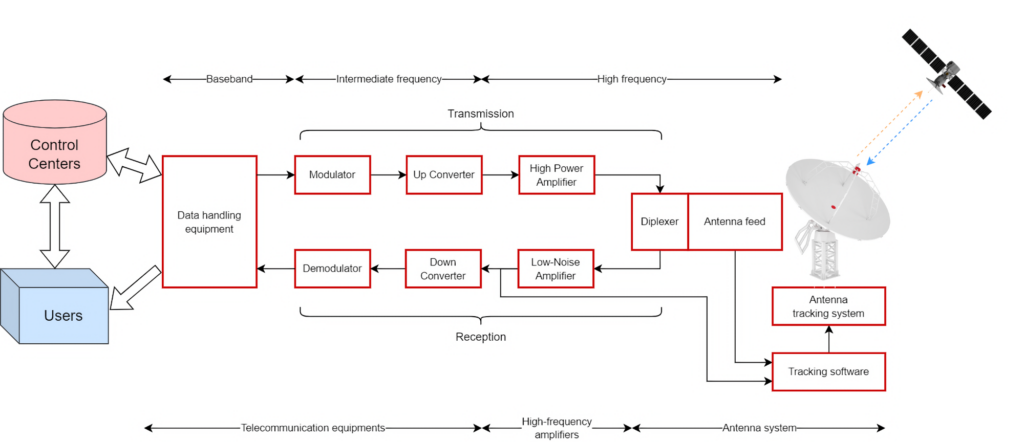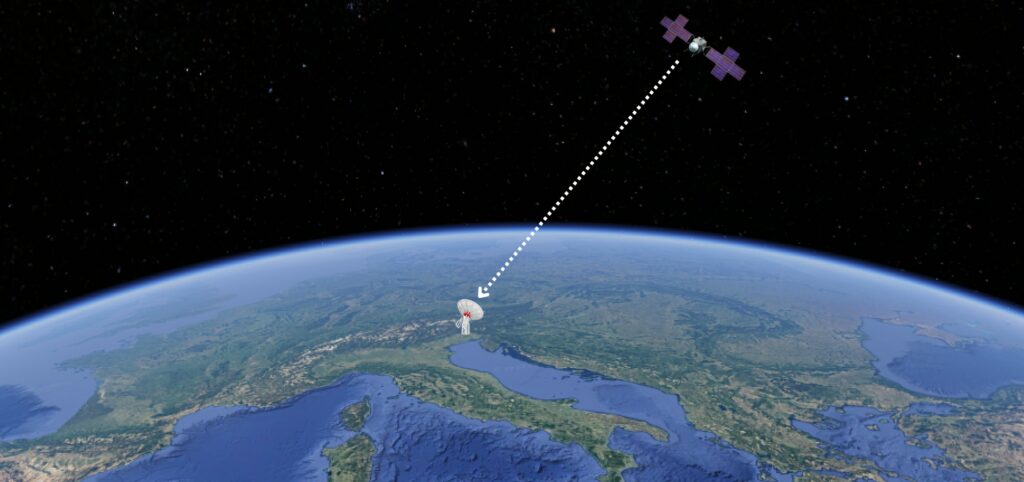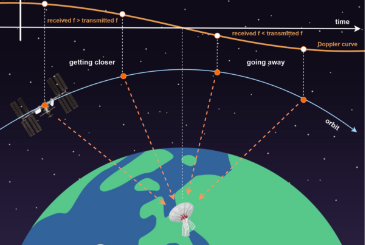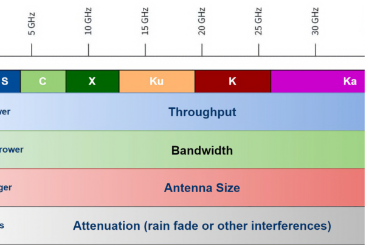A ground station for space communication is a crucial part of the ground segment, serving as the Earth-based infrastructure that maintains the communication link with satellites in orbit or deep-space missions. Acting as the communication hub between Earth and spacecraft, a ground station enables mission control to send commands, track satellite position, and receive valuable scientific and operational data. Without ground stations, satellites and probes could not function effectively or deliver information back to Earth.
Main functions of a ground station for space communication
1. Supporting the spacecraft and payload
- Maintain continuous RF communication links.
- Track spacecraft to determine position, velocity, and orbital parameters.
- Process and manage received data.
- Command and control both spacecraft bus and payload instruments.
2. Interfacing with users
- Provide users with requested data (telemetry, imagery, scientific results).
- Receive user-generated requests or control inputs for the mission.
To achieve this, the ground segment is composed of:
- Ground stations – responsible for acquiring data from spacecraft, processing signals, and forwarding the information to control centers and end users.
- Control centers – responsible for mission decisions, user interfaces, and coordination with the space segment.
Basic components of a radio communication system
At its core, any ground station for space communication is built around a radio system that includes:
- Transmitter: Generates radio frequency (RF) energy, modulates it with data or commands, and sends it to the antenna.
- Antenna: Converts electrical signals into electromagnetic waves for transmission, and back again for reception. Ground station antennas are usually parabolic dishes, capable of precise pointing.
- Receiver: Captures incoming signals from space, amplifies and converts them back into electrical form, and extracts the transmitted information.
- Modem (Modulator-Demodulator): Encodes digital information for transmission (modulation) and decodes it upon reception (demodulation). This step is essential for handling digital telemetry and commands.
How a ground station processes signals
Communication with satellites involves handling multiple frequencies and signals simultaneously, especially with geostationary satellites. For this reason, ground stations use redundant systems, including:
- Up-converters and down-converters: Translate signal frequencies for easier amplification and processing.
- Modulators and demodulators: Manage the complexity of multiple data streams and ensure robust signal recovery.
- High Power Amplifiers (HPA): Boost outgoing signals before they are transmitted via the antenna.
- Diplexers and combiners: Allow simultaneous transmission and reception on the same antenna without interference.

Tracking satellites with a ground station for space communication
One of the most important roles of a ground station for space communication is accurate antenna pointing. As satellites move across the sky, the antenna must continuously adjust its azimuth and elevation. This is achieved through a closed-loop control system involving:
- Sensors that measure antenna orientation.
- A control unit that compares the current orientation with the desired position.
- Motors and actuators that adjust the antenna to maintain precise pointing.
To calculate where the satellite will be at any moment, ground stations rely on orbital propagators—mathematical models that use orbital data to predict satellite visibility windows.
Two Line Elements (TLE)
Ground stations commonly use Two Line Elements (TLE), a standardized data format describing satellite orbits. TLEs are updated daily to account for perturbations such as atmospheric drag or gravitational influences.
- Line 1: Contains satellite identification, epoch (reference time), inclination, right ascension, and eccentricity.
- Line 2: Includes argument of perigee, mean anomaly, mean motion, and revolution count.
With these orbital parameters, software predicts when a satellite will rise above the horizon and computes the pointing angles needed for the ground station antenna.

INTREPID ground station for space communication
If you’re looking for a ground station for radio frequency space communications, consider opting for our INTREPID ground station antenna systems. These ground stations include a specially designed antenna tracking system to automatically track satellites based on TLE. Explore all the available models of our INTREPID ground station antenna systems by clicking here. We provides comprehensive services, including design, shipment, installation, and training. From conceptualization to on-site training, we are here to support every phase of your mission.



